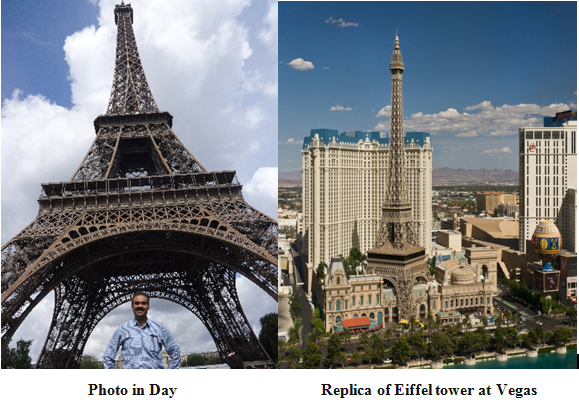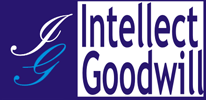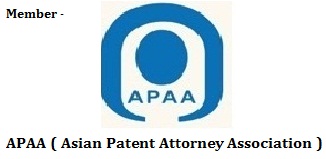Singapore is the first country in the world , launch computer application for trademark Registration , by the easy process you can file your trade mark application within 10 minutes .
A new mobile app touted as the worlds first trademark registration mobile app will allow businesses and entrepreneurs to file their trademarks directly with the Intellectual Property Office of Singapore (IPOS) on their mobile devices.
Named IPOS Go, the app has a simplified user interface and features that will allow for a faster and easier application process, IPOS said.
With the app, a trademark can be filed in less than 10 minutes, a small fraction of the current 45 to 60 minutes IPOS said.
Filing costs will also be significantly reduced as applicants may feel more confident in filing their applications directly with IPOS, the authority said.
Available on the Apple App store and Google Play, the app will also allow applicants to track their registration status, be notified of important updates, as well as file for trademark renewals.
IPOS Go also uses artificial intelligence (AI) technology to help prevent applicants from filing for trademarks that are too similar to existing ones. IPOS said that more than 40 per cent of trademarks filed in the world today contain images.
As the world continues to see a surge in trademarks filings, the new AI capability will help business owners better manage their brands, it said.
According to IPOS, trademark applications in Singapore have increased by 30 per cent over the last five years.

McDonald’s Corp has lost its rights to the trademark “Big Mac” in a European Union case ruling in favor of Ireland-based fast-food chain Supermac’s, according to a decision by European regulators.
As per judgment revoked McDonald’s registration of the trademark, saying that the world’s largest fast-food chain had not proven genuine use of it over the five years prior to the case being lodged in 2017.
The Spain-based EU Intellectual Property Office (EUIPO) did not respond to phone calls and emails requesting comment. McDonald’s was not immediately available to comment on the decision, which the company can still appeal.
The ruling allows other companies as well as McDonald’s to use the “Big Mac” name in the EU.
Supermac’s said it can now expand in the United Kingdom and Europe. It said it had never had a product called “Big Mac” but that McDonald’s had used the similarity of the two names to block the Irish chain’s expansion.
“Supermac’s are delighted with their victory in the trademark application and in revoking the Big Mac trademark which had been in existence since 1996,” founder Pat McDonagh told Reuters in an email.
“This is a great victory for business in general and stops bigger companies from “trademark bullying” by not allowing them to hoard trademarks without using them.”
McDonald’s, which sells its flagship “Big Mac” burgers internationally, submitted printouts of European websites as evidence, as well as posters, packaging, and affidavits from company representatives attesting to “Big Mac” sales in Europe.
The EUIPO said the affidavits from McDonald’s needed to be supported by other types of evidence, and that the websites and other promotional materials did not provide that support.
From the website printouts “it could not be concluded whether, or how, a purchase could be made or an order could be placed,” the EUIPO said. “Even if the websites provided such an option, there is no information of a single order being placed.”
McDonald’s has historically been “extremely litigious” in the area of trademark law and typically does not lose, said Willajeanne McLean, a law professor at the University of Connecticut.
In 1993, McDonald’s won a court order blocking a dentist in New York from selling services under the name “McDental.”
In 2016, McDonald’s defeated an effort by a Singapore company to register ‘MACCOFFEE’ as an EU trademark.
The tech giant Sony has ramped up their technology from something that weve only seen in James Bond movies, to now being our reality. The company has filed for a patent that reveals how their smart contact lenses will take pictures and record videos just with a simple blink, storing them in a small memory space on the lens or on the users eyeballs. Not only is Sony striving for this, but other tech giants such as Samsung and Google have made plans for their smart contact lenses, going public with their ideas of taking pictures, making videos and monitoring sugar intake; gamers will also experience enhanced gaming, and other possibilities are endless.
However, Sonys patent doesnt mean well be seeing them anytime soon. Nevertheless, Sonys release of the lens will contain a picture-taking unit, a central controlling unit, the main unit along with an antenna, a storage area and a piezoelectric sensor.

Image Source: C|Net A diagram of the smart lens showing different regions of the lens.
The last mentioned unit above is responsible for monitoring the time on how long the eyelids have remained opened, and it will also detect the blink that was done to take a picture, as well as the blinks that were done subconsciously. This will allow the unit to distinguish between taking pictures and a normal blink.
As mentioned in Sonys patent, the subconscious blink is between 0.2 to 0.4 seconds, thus the patent states that if the blink exceeds more than 0.5 seconds, then it was done on purpose and will be considered an unusual blinking, therefore, gesturing the unit to capture the image. The antennae will supply the power to the lens wirelessly, source it from the smartphone, a smart tablet or a computer. The technology that was first discovered by Nicola Tesla, will use either radio waves, electromagnetic induction or electromagnetic field resonance, and to top it off, the smart lens will sport an autofocus and zoom ability.
But before happy blinking customers can get their hands on this latest device, and for the intelligence agencies to blink on everything in their sight, the technology is still to go through stringent tests. Then again, a technology such as this, is an interesting concept wrapped up in the scary, depending on how it will be used


Wrought-iron lattice tower on the Champ de Mars in Paris, France , named after the engineer Gustave Eiffel, whose company designed and built the tower.
You can almost never find videos or photos of the Eiffel Tower at night on stock sites. Why is this? Because the Eiffel Tower is copyrighted when those lights are twinkling in the night sky. This 4-minute video from Half as Interesting explains why.European Union copyright law states that an artistic work (that could be a photo, video, song, or building) is protected during the lifetime of its creator, plus another 70 years.
Most countries have a “freedom of panorama” law, which allows you to photograph a skyline and include copyrighted buildings in your shot. So while you’d be perfectly okay capturing a photo of Big Ben in London, you just couldn’t go off and build a brand new version in your backyard without infringing copyright.
But the EU allows countries to opt-out of including this freedom of panorama clause in their copyright laws. France has chosen to utilize this exception.
The copyright owner and creator of the Eiffel Tower died in 1923, so in 1993 the image of the Eiffel Tower entered into the public domain. That’s why Las Vegas has its own Eiffel Tower, built in 1999.
But the lights were not installed until 1985 and, since they’re considered an artistic work, they are well within their copyright protection period.
The same applies for the Louvre and Rome’s main train station. While no one has ever gone to court for a night-time Eiffel Tower snap, that could change at any time.“Technically taking the picture is also illegal, but it’s the sharing part that will land you in hot water,” Metro writes. “If you want to publish the image to social media you must gain permission from the ‘Société d’Exploitation de la Tour Eiffel’ (the Eiffel Tower’s operating company).”We previously wrote about this same topic back in 2014.





